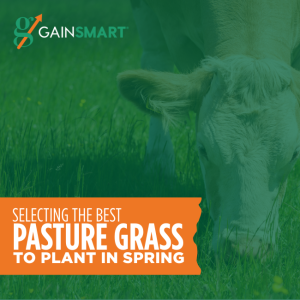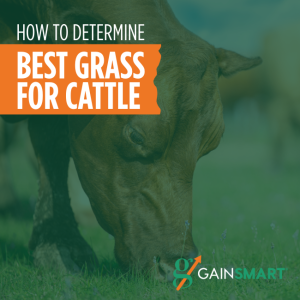
“You’ve got to know when to hold ’em; know when to fold ’em.” If the lyrics of this age-old Kenny Rogers song, “The Gambler” sound familiar to you, you might be in the cattle business. But, with proper planning, adequate resources and some helpful advice, you can reduce the gamble, and turn existing pasture land into a profit center for your cattle operation.
Many landowners with a passion for the cattle industry have replaced their cow-calf enterprises with backgrounding or stocker operations for a less time-consuming livelihood that often provides a faster rate of financial return. However, just because you have plentiful pasture space doesn’t mean you are automatically ready to capitalize on weaned calves. There are several factors to consider before making this investment to see if you can turn your pasture into profit.
First, you must decide what type of cattle you will run, how long you want to background them, where you will source them from and how much you are willing to and can pay for them in order to make a profit. Then, you need to determine your input costs and consider if this will be a profitable venture if you do have the proper resources.
Dale Blasi, Kansas State University Professor and Extension Specialist is the Manager of the KSU Beef Stocker Unit. He advises anyone considering stockers to research the value of gain using a calculator like the one found at www.beefbasis.com, which considers both the futures markets for feeder cattle and corn.
Size of cattle and timing are other important factors that Dr. Blasi said will influence the cost of feeder calves and predicts that from now until May feeder calf prices will be high.
“Anywhere from 450-600-pound weights are going to be commanding a premium right now because of the demand, leading up to April or May, as people are anticipating going to grass,” he said.
Once a person has made the proper financial calculations and determined if it is fiscally feasible to background calves, he or she needs to determine if they have the proper resources. In addition to suitable grass, they need receiving facilities and a good working relationship with a reliable veterinarian.
“Adequate facilities, adequate labor, somebody who is dedicated to be a good health checker and a restraining chute are just a few of the things you will need before you decide to run stockers,” Dr. Blasi said. “If you are going into something new and you don’t have any of that, you’re just asking for trouble unless you purchase the calves that already have all their shots and pose no potential challenges.”
Appropriate receiving facilities for these new stockers are a must, according to Dr. Blasi. He emphasized that you don’t want too big of a pen for the cattle to get anxious in, but you do need to provide adequate depth, proper bunk space and a perimeter waterer with fresh, free-flowing water. He recommends initially introducing them to long-stem hay. Also, make sure the pens are steel-made, and not barbed-wire to reduce any cuts or harm that could be caused to the animals if they are nervous or “flighty.”
“You aren’t going to buy them, kick them out to grass and wish them the best, at least I wouldn’t. You need to settle them down and provide any necessary immunizations,” Dr. Blasi said.
If your calves are coming pre-managed from a single source and have all of their vaccinations, they shouldn’t need further shots upon arrival. However, Dr. Blasi recommends keeping them in the receiving pens for up to seven days to watch for any sickness that might need treated.
When buying mixed lots of calves through an order buyer, an auction market and from multiple sources, you’re going to need to get them straightened out, so you’ll want to keep them contained through their second series of antibiotics or up to three or four weeks, according to Dr. Blasi. If any calves do have individual health issues, you can separate them to treat them. In addition, weather will also play a role in how long you keep your calves in the receiving pens.
With any calves you receive, consider giving them a dose of Vita Charge® Cattle Drench to help promote their feed and water intake and give their digestive system a jump-start during this time of stress. Also, providing them with a Vita Charge Stress Tub in the receiving pen helps them recover from the stress of transportation and adapting to a new environment, while promoting feed and water intake. All Vita Charge products contain Amaferm®, a precision-based prebiotic, to combat stress resulting in increased intake and nutrient digestion. The Stress Tub also contains MOS to trap bad bacteria limiting their ability to do harm, as well as organic trace minerals, vitamins and B vitamins.
Once your calves are adapted to their new environment, eating and drinking and free of any signs of illness, it is time to turn them out to grass. Dr. Blasi said under typical Kansas conditions, the double-stocking rate for 90 days is 250 pounds of beef per acre or a 500-pound calf per two acres. If grazing longer, up to 150 days, consider three or four acres per calf. And, if you are intensive grazing, you can get by with 1.2 acres/calf if you are willing to provide a supplement like a hand-fed distiller’s grain on a daily basis, further requiring more labor and equipment.
Supplementing your stockers with seven pounds of distiller’s grain/head/day, will help increase gains by 0.5-0.7 pounds per day, according to a 2013 KSU study. Another way to help increase gains and nutrient values in the grass is to feed Gain Smart® Stocker mineral. The free-choice mineral contains organic copper and zinc plus added iodine for maximum bioavailability to the animal to support hoof health and immunity. It also contains Amaferm, research-proven to promote calf health and vigor, and stimulate digestion and nutrient absorption of forage for optimum gain. Research has shown that cattle fed 2-2.5 grams of Amaferm per head per day will increase gains 0.25 pounds per day.
Facilities, veterinarian relationships and a good nutrition program all play a hand in knowing “when to walk away and when to run” into the stocker business. Follow the advice of KSU expert Dale Blasi and turning your pasture in profits won’t be such a gamble.

